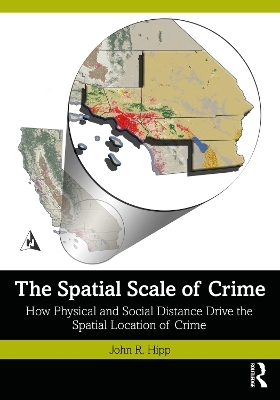
The Spatial Scale of Crime
Routledge (Verlag)
978-1-032-20236-5 (ISBN)
Combining insights from two distinct research traditions—the communities and crime tradition that focuses on why some neighborhoods have more crime than others, and the burgeoning crime and place literature that focuses on crime in micro-geographic units—this book explores the spatial scale of crime. Criminologist John Hipp articulates a new theoretical perspective that provides an individual- and household-level theory to underpin existing ecological models of neighborhoods and crime. A focus is maintained on the agents of change within neighborhoods and communities, and how households nested in neighborhoods might come to perceive problems in the neighborhood and then have a choice of exit, voice, loyalty, or neglect (EVLN).
A characteristic of many crime incidents is that they happen at a particular spatial location and a point in time. These two simple insights suggest the need for both a spatial and a longitudinal perspective in studying crime events. The spatial question focuses on why crime seems to occur more frequently in some locations than others, and the consequences of this for certain areas of cities, or neighborhoods. The longitudinal component focuses on how crime impacts, and is impacted by, characteristics of the environment. This book looks at where offenders, targets, and guardians might live, and where they might spatially travel throughout the environment, exploring how vibrant neighborhoods are generated, how neighborhoods change, and what determines why some neighborhoods decline over time while others avoid this fate.
Hipp’s theoretical model provides a cohesive response to the general question of the spatial scale of crime and articulates necessary future directions for the field. This book is essential for students and scholars interested in spatial-temporal criminology.
WINNER of the 2023 James Short Senior Scholar Award!
John R. Hipp is Professor in the Departments of Criminology, Law and Society, and Sociology, at the University of California, Irvine. His research interests focus on how neighborhoods change over time, how that change both affects and is affected by neighborhood crime, and the role networks and institutions play in that change. He approaches these questions using quantitative methods as well as social network analysis. He has published substantive work in such journals as American Sociological Review, Criminology, Social Forces, Social Problems, Mobilization, City & Community, Urban Studies, and Journal of Urban Affairs. He has published methodological work in such journals as Sociological Methodology, Psychological Methods, and Structural Equation Modeling.
Chapter 1. Introduction: Understanding Crime in Neighborhoods
Chapter 2. A General Theory of Spatial Crime Patterns: Explaining Where Crime Occurs
Chapter 3. What Is a Neighborhood? Spatial Social Networks and Egohoods
Chapter 4. How Do We Learn About Crime and Disorder?
Chapter 5. How Do Residents Respond to Neighborhood Crime?: The EVLN Model
Chapter 6. Why Doesn’t Everyone Choose "Voice"?
Chapter 7. Social Distance, Physical Distance, and Social Networks
Chapter 8. Temporal Scale: Stability and Dynamic Neighborhoods
Chapter 9. Larger Units of Analysis: How Do Small-Scale Processes Scale Up?
Chapter 10. Conclusion: Where Are the Implications Of All This?
| Erscheinungsdatum | 21.11.2022 |
|---|---|
| Zusatzinfo | 1 Tables, black and white; 28 Line drawings, black and white; 28 Illustrations, black and white |
| Verlagsort | London |
| Sprache | englisch |
| Maße | 178 x 254 mm |
| Gewicht | 780 g |
| Themenwelt | Naturwissenschaften ► Biologie ► Ökologie / Naturschutz |
| Naturwissenschaften ► Geowissenschaften ► Geografie / Kartografie | |
| Recht / Steuern ► Strafrecht ► Kriminologie | |
| Sozialwissenschaften ► Soziologie | |
| ISBN-10 | 1-032-20236-X / 103220236X |
| ISBN-13 | 978-1-032-20236-5 / 9781032202365 |
| Zustand | Neuware |
| Haben Sie eine Frage zum Produkt? |
aus dem Bereich


